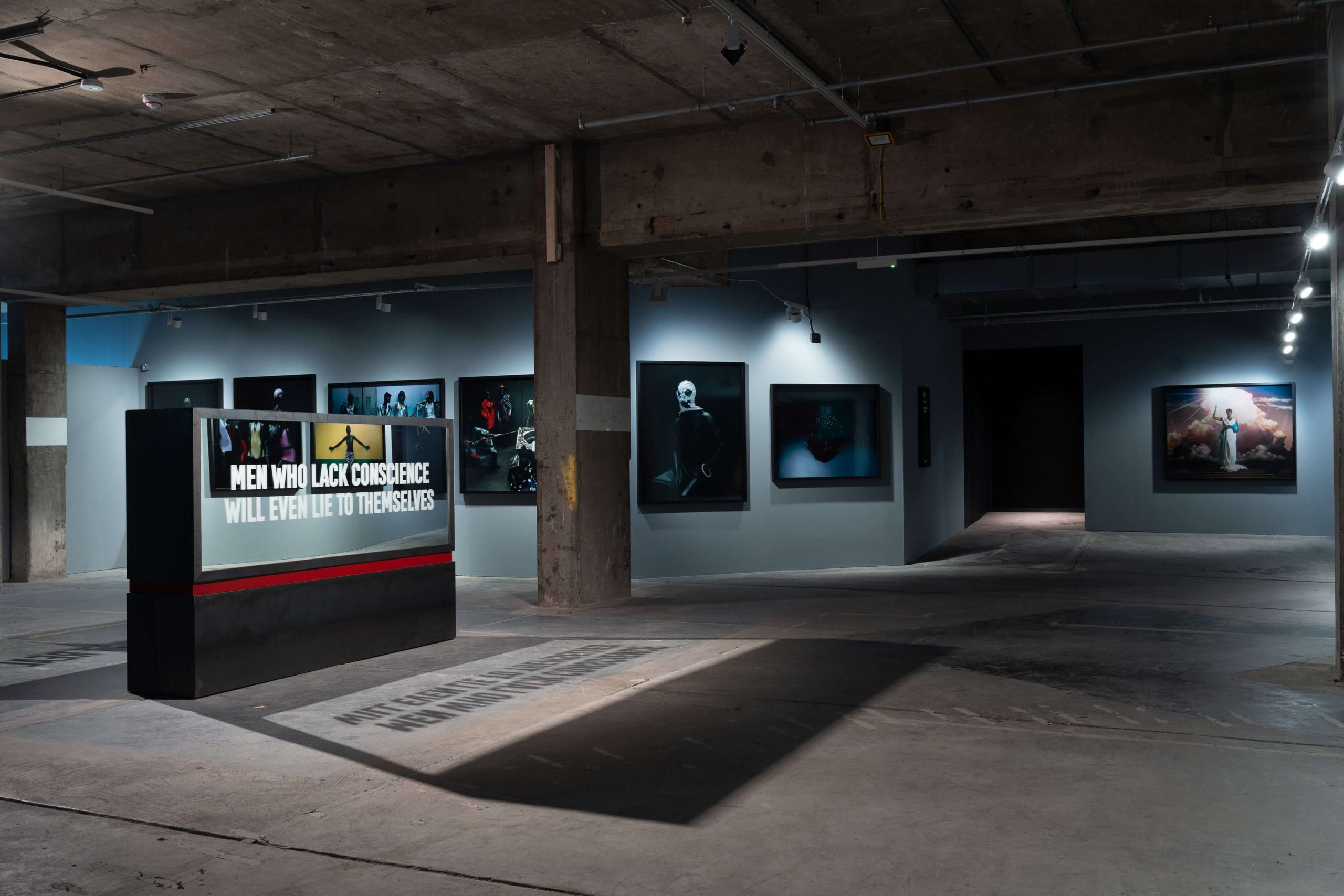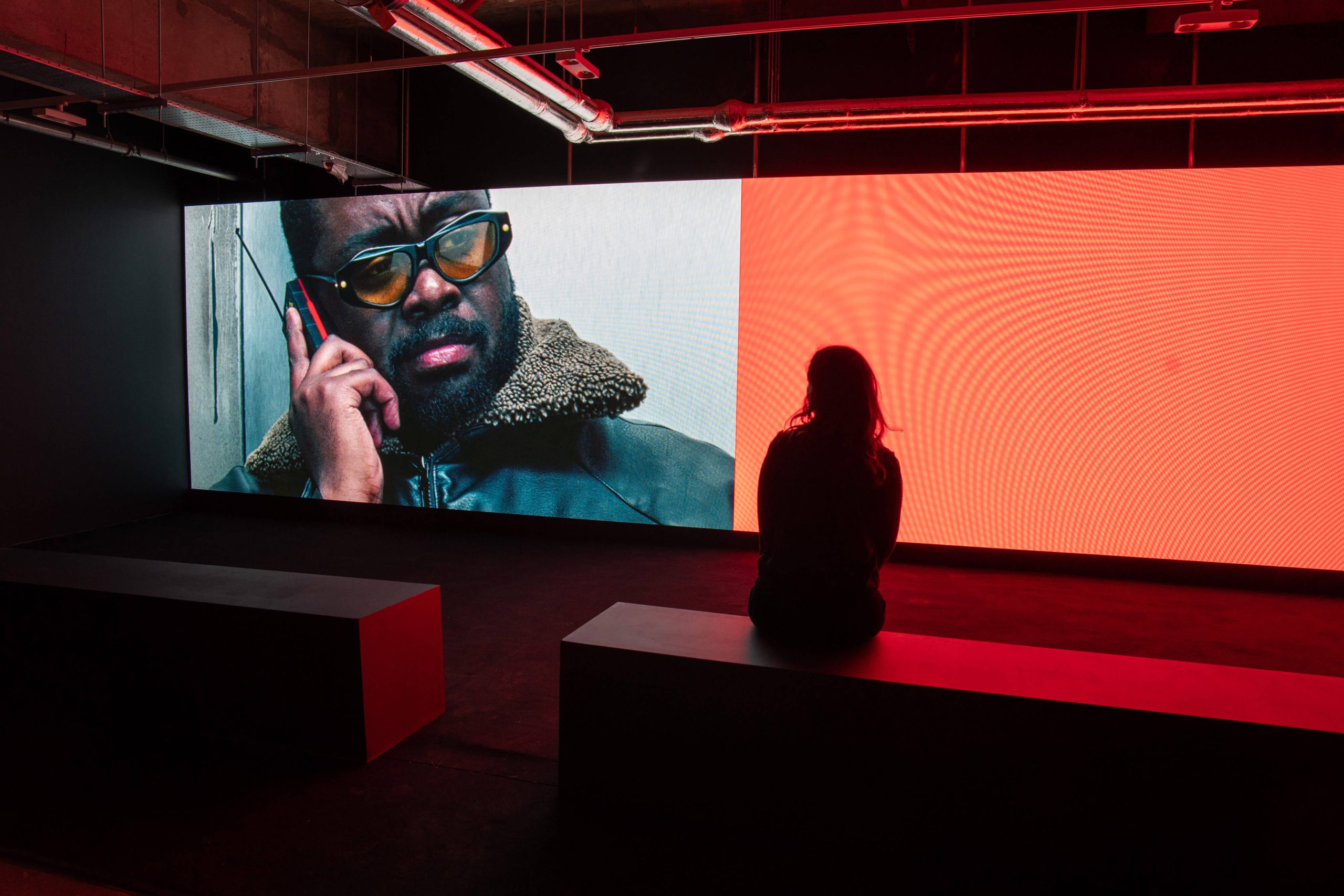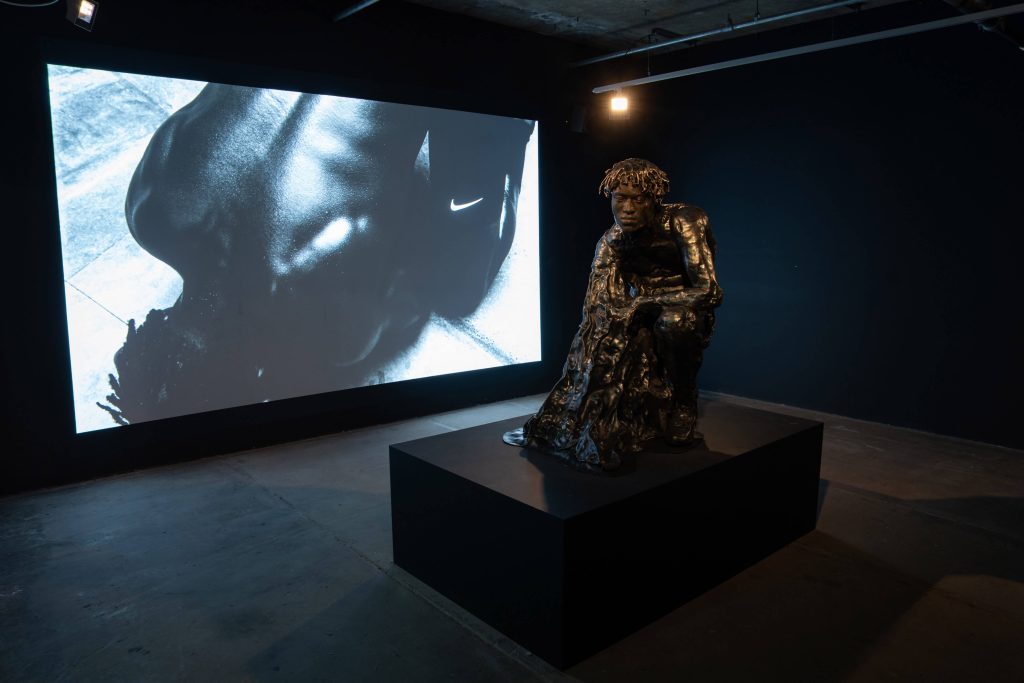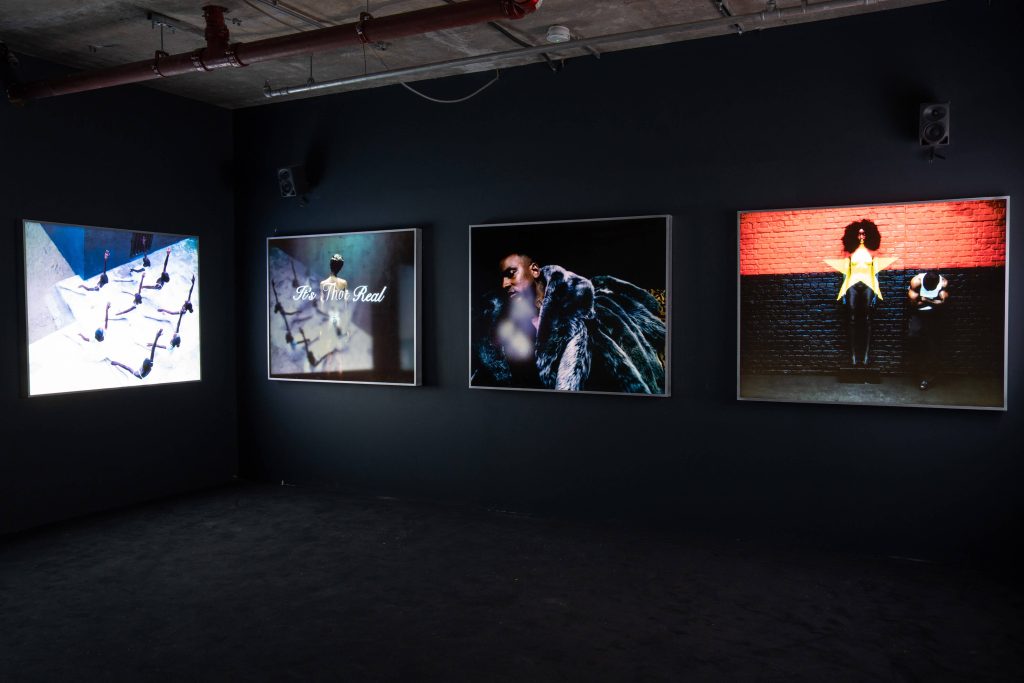Dominique Skolosdra reviews the groundbreaking new installation from Gabriel Moses.
Images: Niklas Hallen
Faced with the overwhelming task of articulating greatness, I reflect on an age-old question: What intimate stories can artistry reveal about a person’s undisclosed perspective on the world when they are absent? For Gabriel Moses, the answer is Selah.
In a biblical context, Selah, though its precise definition remains unclear, is often understood as a pause for reflection—a moment to absorb what has just been said or what lies ahead. Over the past few days, 180 Studios has opened its doors, inviting audiences on a journey through the intricate pathways of Gabriel Moses’ world. His largest exhibition to date, curated by Katja Horvat and designed by Emilia Margulies, unveils a repertoire of over 70 photographs, films, and music videos, each meticulously organized into their respective chapters and verses. It is with grace and intention that you are encouraged to take a moment of stillness before entering each new space.


In a biblical context, Selah, though its precise definition remains unclear, is often understood as a pause for reflection—a moment to absorb what has just been said or what lies ahead. Over the past few days, 180 Studios has opened its doors, inviting audiences on a journey through the intricate pathways of Gabriel Moses’ world. His largest exhibition to date, curated by Katja Horvat and designed by Emilia Margulies, unveils a repertoire of over 70 photographs, films, and music videos, each meticulously organized into their respective chapters and verses. It is with grace and intention that you are encouraged to take a moment of stillness before entering each new space.
Those familiar with Moses’ work have undoubtedly been captivated by his ability to weave a rich tapestry of deep monochrome and contrasting pigments throughout his entire body of work. Rooted in his lived experiences of family life, cultural identity, and social commentary, while paying homage to the powerful women in his life, Moses continues to approach art with the purity of a child’s unfiltered creativity. It’s these subtle, playful details throughout that fuel your curiosity—or in my case, left me smiling with admiration. Evocative imagery lies at the heart of each piece, shaping for Moses a visual language that strives to stand the test of time, while consistently earning recognition from collaborators such as Travis Scott and Playboi Carti (Fein), Schoolboy Q (Lost Times), Louis Vuitton, Burberry, Pharrell Williams, and others.



In a far corner marked by a ticking countdown, Moses premieres his highly anticipated short film The Last Hour, commissioned by 180 Studios and executively produced by Division and Goat. Beyond its striking visuals and rhythmic intensity, the film guides us through one man’s search for redemption and self-acceptance, subtly challenging the audience’s sense of self—with the mutual unnerving sensation of a ticking clock strapped to your own chest. It quickly becomes clear that Selah is not merely a single moment of reflection—it is woven into the very rhythm of Moses’s entire artistic practice.
To answer the question of what intimate stories his artistry reveals remains at the mercy of the audience, but with love and respect, it is clear that family ties serve as the origin of each idea. I was pleased to sense this strong connection throughout and admired the commitment to include the faces and voices of like-minded trailblazers such as John Glacier, Slawn, Alek Wek, Skepta, and many others—each of whom continue to break through the confines of every box. I was not only entertained but empowered. It’s the kind of excitement that stifles your ability to articulate—and for once, I was truly left speechless.
Selah is open to the public from 28 March to 27 July 2025 at 180 Studios, Wednesday to Sunday, from 12pm to 7pm. Last entry is 20 minutes before closing. Book tickets here.